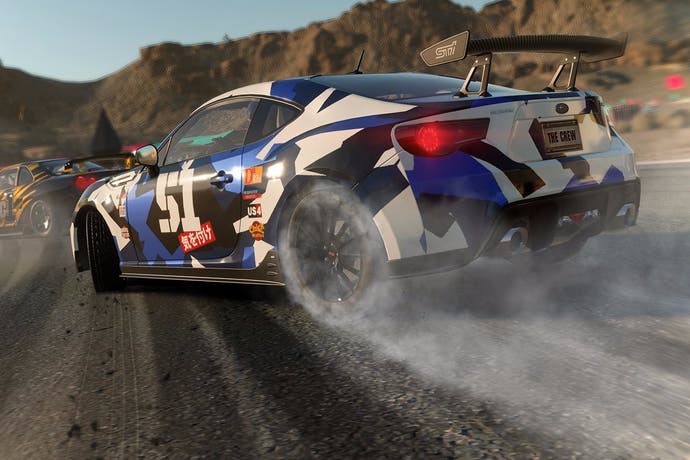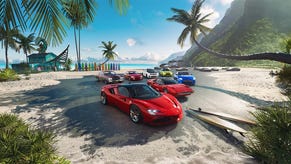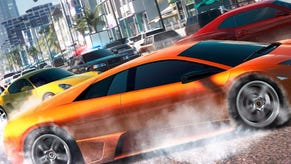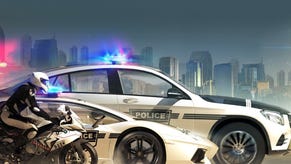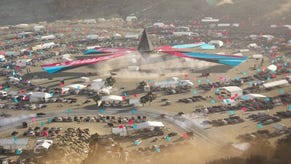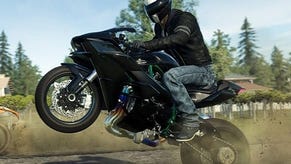Face-Off: The Crew: Wild Run
Digital Foundry on the game's visual revamp - and how well Xbox One and PS4 handle it.
It's been a long and winding road for The Crew. Despite attracting decent reviews at launch, there was a sense that the game was somewhat overlooked - a situation developer Ivory Tower sought to address with the recent release of the Wild Run expansion. Originally a cross-gen release with visual technology to match, the Wild Run expansion upgrades The Crew's rendering tech to current-gen standards and boasts a whole host of gameplay updates to match.
There's new content too, including extra vehicles and new missions but more importantly, Ivory Tower has also spent a considerable amount of time rebalancing gameplay. Car handling and physics are tweaked, with improved aerodynamics and grip. While the additional gameplay content (featuring new missions and vehicles) requires a DLC purchase, all of the visual upgrades are available for free for existing owners of the old game via the latest software update. In essence, there's a massive revamp here that revitalises the title in key areas - if you're an existing owner of The Crew, now might be the time to dig out the game and give it a whirl.
In fact, owing to the online-only nature of the title, it's now impossible to play the original version of The Crew. This makes sense given how much the online component is integrated into the core of the game, but going into this piece, our questions were pretty straightforward: how much does the technical upgrade affect the core gameplay experience and do both PlayStation 4 and Xbox One benefit equally from the revamped technology?
Booting up the The Crew with the Wild Run update, initial impressions are a little mixed. Image quality remains spotty, with plenty of jaggies and pixel-popping across fine details and distant scenery. However, the anti-aliasing solution in play here is less buggy: bizarre artefacts that appeared across edges in the original release are nowhere to be seen in the Wild Run and this helps to add additional refinement to the presentation. There's a boost to the presentation here, but we still feel that The Crew falls just a little too short in this area.
Looking past these issues, Ivory Tower has made some positive steps in improving The Crew's visual presentation to a level more in line with other current generation racing games. In particular, the switch to physically-based rendering, along with a reworked lighting model are by far the biggest upgrades, radically changing the look and feel of every location across the game.
The idea here is to allow for both environments and vehicles to appear as realistic as possible. Surfaces now feature material properties that dictate how lighting interacts with various objects - such as metallic paint on sports cars and brickworks across buildings - and the result is that various locations throughout The Crew are now more naturally rendered. By contrast, some of the lighting choices in the original release cast the world with a more stylised appearance. Tweaks to some of the core artwork have also been made to complement the switch to a new rendering set-up. For example, select buildings are partially remodelled and feature new textures that better blend in with surrounding architecture.
The new lighting model sees the aesthetics of various locations completely transformed in other ways too, perhaps in order to take full advantage of the new rendering set-up. Cloud coverage, shadow position, and the way environments are illuminated are all affected, and this adds a distinctly different feel to various events. For example, night-time scenes appear a little flat in original release but these now have more depth after the Wild Run update is installed, adding a little more ambience to these scenes.
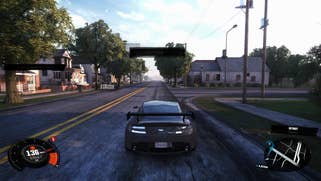



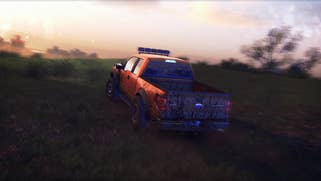
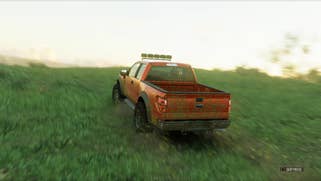
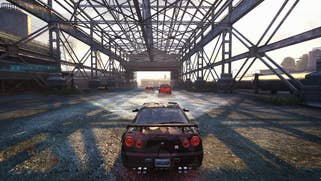
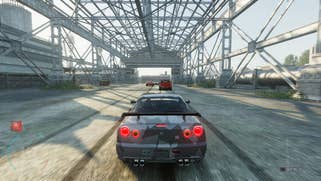
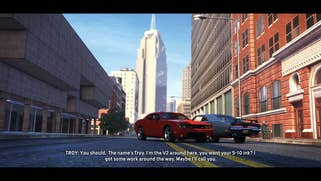
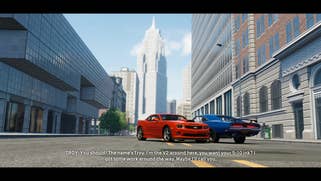
Many of the scripted lighting conditions in the main missions also take place at different times of day in the new update. Sometimes this adds a more realistic feel to these areas of the game, but on a number of occasions we felt that some of the artistic changes actually impact upon the visuals in a negative way. For example, in the original release, the Xfinity Challenge takes place on the backdrop of a late evening sunset, making for distinctly moody race through the mountainside and into the city. For the Wild Run, the same event takes place in late afternoon under brighter sunlit vistas that simply don't evoke the same sense of atmosphere.
Another major change comes with the introduction of dynamic weather effects that randomly appear when free-roaming across the map. Rain and mildly stormy conditions see pools of water build up across the road and this impacts upon the way cars handle in these conditions. There's less grip applied to the tyres, and this makes racing in wet conditions more. It's a great inclusion to the game, but also under-utilised much of the time. Brief showers are seen fairly regularly, but heavy storms are a rare sight indeed. Dynamic transitions between weather are also absent from the main story missions, but we still see the appearance of wet roads in many events previously set under dry conditions, and this changes the way these races play.
Other areas see improvements to post-processing. Motion blur is now more heavily deployed during gameplay, while depth of field is given a more advanced implementation that adds a stronger blur to out of focus areas of the screen. New shader effects are also used to improve reflections on car bodywork so these elements are more faithfully recreated than before. These have no impact on the way the game plays, but serve to add an extra layer of polish over the more substantial changes deployed elsewhere. For example, cut-scenes and high speed races feature more of a cinematic flair in Wild Run, and this helps to get players a little more immersed in the action.


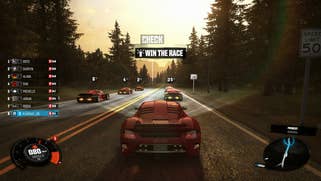
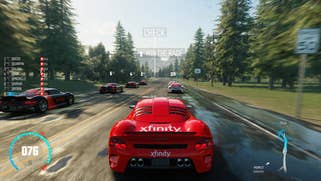


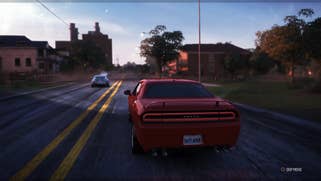

Wild Run represents a significant improvement over the original release of The Crew, but how do these changes translate over to both consoles? Previously, the PS4 version of The Crew benefitted from better image quality and slightly faster LOD streaming, while reflections were rendered at a slightly higher resolution on Xbox One. But on the whole, there wasn't much to separate the two from each other outside of performance, where Xbox One commanded a small advantage in some scenarios.
Taking a look at the Wild Run update, and the gap in terms of overall image quality has been eliminated. Both operate using the same standard of anti-aliasing, and render at native 1080p. Artwork and the majority of effects are also matched too, producing an almost identical looking game, aside from differences in light and shadows caused by variable time of day changes.
This level of visual parity doesn't extend to performance though, which is one area where we still see the Xbox One version command an advantage over the PS4 game. The good news is that frame-rates are still in the same ballpark as the original release despite the massive visual revamp, but the graphical upgrades in Wild Run come at a cost when the engine is under load.
The Initiation mission presents us with an early stress test for the game. Set in downtown Detroit in late evening, the race sees us tearing through a small industrial area, before entering a more populated city where a helicopter sweeps across the road as the event reaches its conclusion. During this segment of gameplay on PS4, the use of new effects and a different lighting model causes more tearing on the Wild Run version of The Crew set-up against the original game in the same scenario.
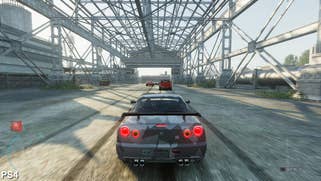


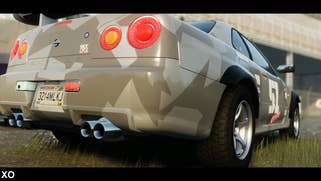
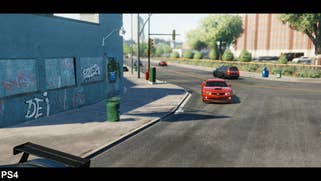



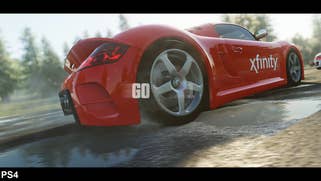
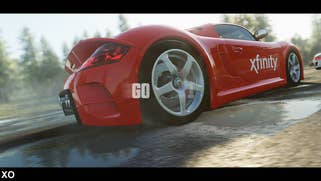
This leads to an increased amount of judder on-screen and larger variances in controller latency. Meanwhile there's less of a difference on the Xbox One. We see a little more tearing and some minor frame-rate drops in places but otherwise the experience is almost identical to the original release for most of the duration.
Tearing and some occasional frame-rate drops appear sporadically, but they rarely distract from gameplay outside of more demanding scenes. Here the Xbox One still carves out an advantage over the PS4. There's less screen tear, while frame-rates are generally more stable overall: the larger drops down to the mid-twenties seen on the PS4 are avoided on Microsoft's platform, and as a result the gameplay experience is a little more consistent.
That said, both consoles manage to provide a consistent level of performance for extended periods, and movement appears smoother than in the original release due to the more liberal use of of motion blur with the Wild Run update. Frames are blended together smoothly, and this gives the impression that frame-rates are running slightly higher than 30fps while speeding through the vast North American landscape.
The Crew: Wild Run - the Digital Foundry verdict
When The Crew was first released there was the sense that the developer's ambitions for the title simply weren't matched by the same level of technical polish expected for a current generation game. Prior patches have provided bug fixes, AI tweaks, and made some handling adjustments, but the Wild Run revamp goes much further, attempting to expand upon the ambition of the original game with new content and considerably more advanced visuals. The improved physics and handling model gives vehicles a weightier feel that makes driving more enjoyable than before, while the use of new effects and reworked lighting results in a game that feels much more like a current-gen title, as opposed to the cross-gen release it originally was.
The end result is the Wild Run update perhaps feels more in line with the developer's vision for the original game. That said, image quality could be better despite the tweaked anti-aliasing set-up, while screen tearing can be distracting on both console versions - though it is more of an issue on PlayStation 4. The handling model also needs a little more refinement: at times it still feels like the cars are gliding across the road in a floaty fashion, rather than rolling along the ground - an issue that persists from the original game.
So there's still the sense that the title needs some further refinement, particularly in terms of its handling model, but the good news is that with the Wild Run revamp, PS4 and Xbox One now hand in an identical release in almost all areas with only performance separating the two in some scenarios. As we saw in the original release, the PS4 version falls a little behind here, with slightly less stable frame-rates and heavier pockets of tearing. Ultimately, there's not much in it between platforms, but with the Wild Run update installed, the Xbox One version turns in a more stable experience overall.
